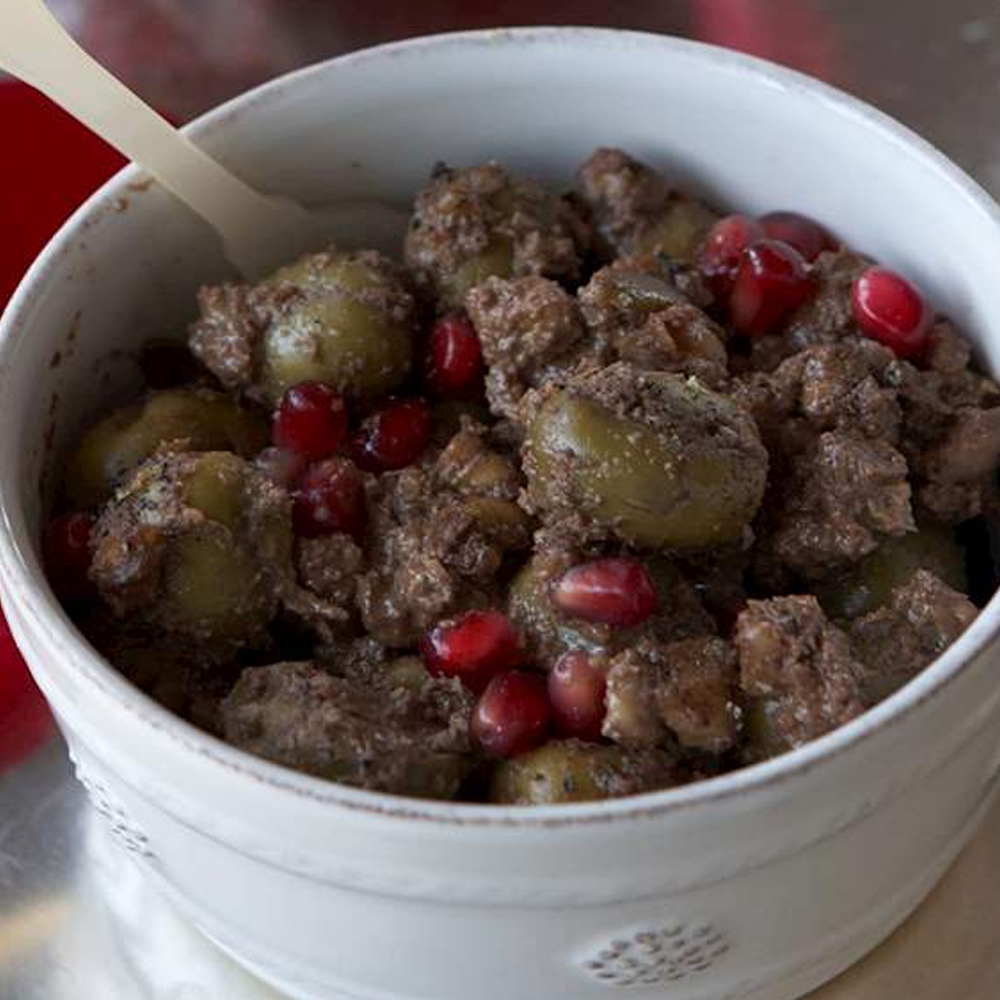Zeytoon parvardeh
Hailing from Iranian Gilan province, this simple dish consists of a flavorful combination of pitted olives and pomegranate molasses. The additional ingredients include ground walnuts, garlic, and various fresh herbs such as cilantro or mint, as well as pomegranate seeds, and generous amounts of olive oil.
Zeytoon parvardeh is usually served well chilled and is traditionally enjoyed as an appetizer or a snack that is accompanied by lavash bread.
Kashke bademjan
This flavorful Iranian appetizer combines grilled or oven-roasted eggplants and kashk—a fermented by-product typically made with yogurt whey. The main ingredients are mashed until creamy, with the addition of sautéed onions, garlic, various spices such as turmeric or mint, and occasionally ground nuts.
The dish is garnished with chopped walnuts, mint, and caramelized onions, as well as a small amount of kashk. Kashke bademjan is enjoyed as an appetizer, a dip, or occasionally the main course, and is best served with warm lavash bread on the side.
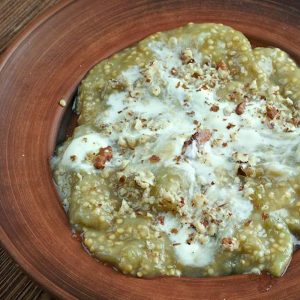
Naz khatun
Naz khatun is an authentic Iranian vegetable condiment which originated in the city of Behshahr. It is prepared with fire-roasted or oven-roasted eggplants, a rather large amount of herbs, and the unusual verjuice, a zesty drink made from unripe grapes.
Roasted eggplants are roughly or finely chopped, then mixed with fragrant herbs such as mint, basil, and parsley. Traditional versions may also include garlic, pomegranate molasses, and powdered wild celery, also known as angelica. Sour verjuice is added in the end to infuse the ingredients and bind them into a more homogenous paste.
Even though it is a simple dish, the final taste of naz khatun is complex, combining smoky eggplant flavors with the freshness of herbs and the pungency of the juice. This wonderfully fragrant condiment is usually served with rice, lentils, or fried eggs.
It can also be used as a delicious dip for traditional Iranian flatbreads.
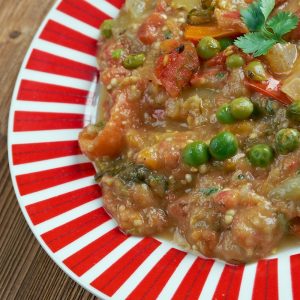
Mirza Ghassemi
Mirza Ghassemi is an eggplant specialty that hails from the Gilan province of Iran. The dish is prepared with eggplants that are first grilled or charred on an open flame before they are finely chopped and combined with tomatoes, garlic, and turmeric.
Finally, eggs are added to blend all the ingredients. Mirza Ghassemi can be prepared in a pan, or as a casserole-dish. It was invented by Mohammad Ghasem Khan, who was once the head of the Gilan province and an Iranian ambassador in Russia. This simple but flavorful dish can be enjoyed as an appetizer when it is usually accompanied by flatbread or as a side dish with rice.
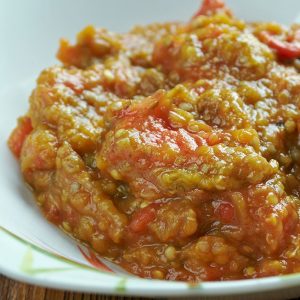
Dal adas
Dal adas is a traditional vegetarian dish hailing from the southern Iranian port city of Bushehr, located on the Persian Gulf. Reminiscent of an Indian dal, this dish typically consists of red lentils which are simmered in vegetable stock with sautéed onions and garlic, diced potatoes, tomato purée, and spices such as turmeric, cumin, cinnamon, chili powder, and salt.
The combination is enhanced with fresh lime juice or tamarind paste, and it can have a thin and soupy or thick and stew-like consistency. This spicy lentil soup or stew is generally served with freshly chopped coriander and red chili on top, and it’s usually accompanied by Persian rice or warm bread on the side.
Iranian Pickles (Hafte bijar torshi)
Hafte bijar torshi is a traditional Iranian pickling mix that’s usually associated with the province of Gilan, but it’s popular throughout the country. The pickled vegetables usually include cauliflower florets, garlic, quince, hot pepper, potatoes, carrots, eggplants, cucumbers, and green beans.
They’re chopped into pieces, blanched, and mixed with mint, parsley, coriander, savory, tarragon, fennel, nutmeg, black pepper, cinnamon, cumin, vinegar, and salt. The concoction is placed into glass jars, and it’s kept in a cold and dark place before consumption.
These pickled vegetables make a great accompaniment to a number of Iranian dishes.
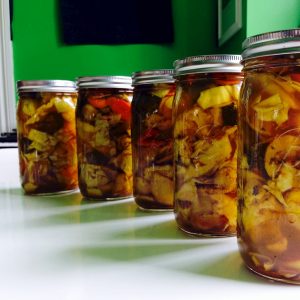
Shirazi Salad
Shirazi salad is a traditional Iranian salad made with cucumbers, tomatoes, onions, and lemon or lime juice. Cilantro, dried mint, and green peppers can be added to enhance the flavor and texture, if desired. The salad is named after Shiraz, a city in the southwest of the country.
It is traditionally served as a refreshing side dish accompanying rice or meat dishes, although it can also be eaten on its own, especially during the summer.
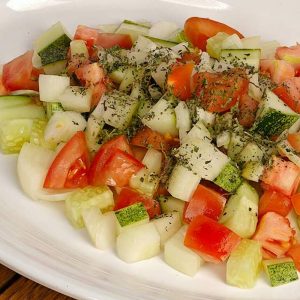
Sabzi khordan
Sabzi khordan refers to an assortment of fresh herbs and vegetables served as an essential part of most Iranian meals. It usually consists of basil, dill, mint, parsley, radishes, scallions, and a variety of other fresh herbs and vegetables. Traditionally, sabzi khordan is served as a side dish with many Iranian meals, but it can also be enjoyed as an appetizer or a light main meal, when it is typically accompanied by flatbreads and feta cheese.
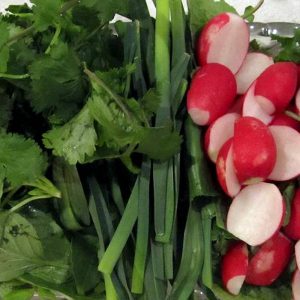
https://www.tasteatlas.com/

